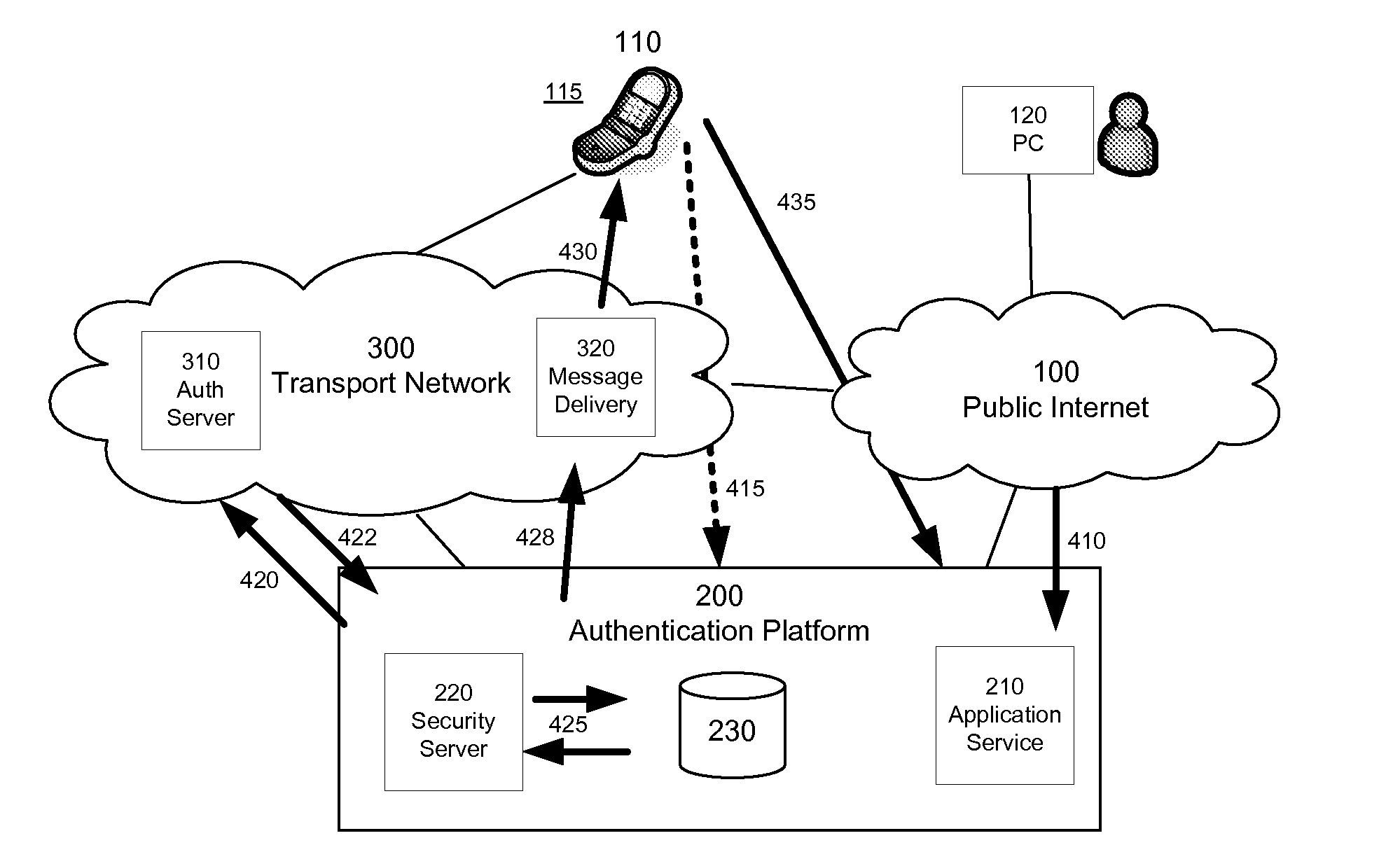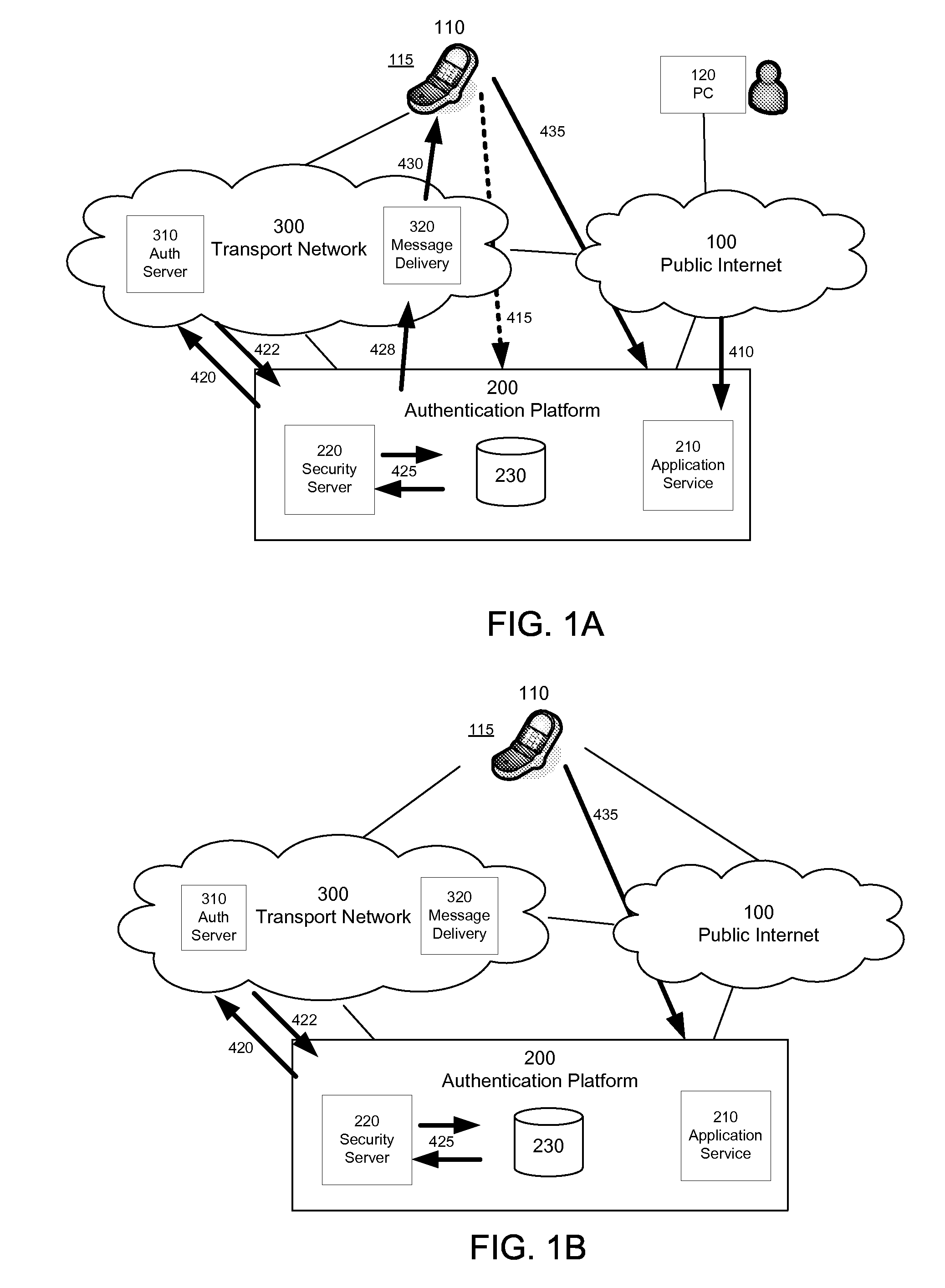Automated Authentication Process for Application Clients
an application client and automatic authentication technology, applied in the field of application client authentication, can solve the problems of not addressing the issue, requiring complex and costly infrastructure for issuing and managing client certificates, and often not having client certificates installed on mobile communications devices, etc., and achieve the effect of hardening the authentication process
- Summary
- Abstract
- Description
- Claims
- Application Information
AI Technical Summary
Benefits of technology
Problems solved by technology
Method used
Image
Examples
Embodiment Construction
[0013]The following terms and acronyms are used throughout this disclosure.
[0014]AAA server—Authentication Authorisation and Accounting infrastructure of a network operator. Typical examples are RADIUS and DIAMETER servers.
[0015]SMS-C / SMS-GW—Short Message Service—Center / Short Message Service—Gateway.
[0016]MNO—mobile network operator.
[0017]IMS—IP Multimedia Subsystem, for example as specified by 3GPP and / or 3GPP2.
[0018]Application client—An application which has been developed for a mobile device and which interacts with a remote server. Typical development platforms are Java / J2ME, Symbian / Series60 / TUQ, Linux, BREW, Windows Mobile, .NET and others.
[0019]Communications address—a phone number, MSISDN, IMSI, SIP URI or other address used for communication purposes.
[0020]Key—unique identifier, typically containing randomly generated elements. It could also contain several elements such as a username and password.
[0021]Mobile transport network—a mobile network such as cellular networks us...
PUM
 Login to View More
Login to View More Abstract
Description
Claims
Application Information
 Login to View More
Login to View More - R&D
- Intellectual Property
- Life Sciences
- Materials
- Tech Scout
- Unparalleled Data Quality
- Higher Quality Content
- 60% Fewer Hallucinations
Browse by: Latest US Patents, China's latest patents, Technical Efficacy Thesaurus, Application Domain, Technology Topic, Popular Technical Reports.
© 2025 PatSnap. All rights reserved.Legal|Privacy policy|Modern Slavery Act Transparency Statement|Sitemap|About US| Contact US: help@patsnap.com


